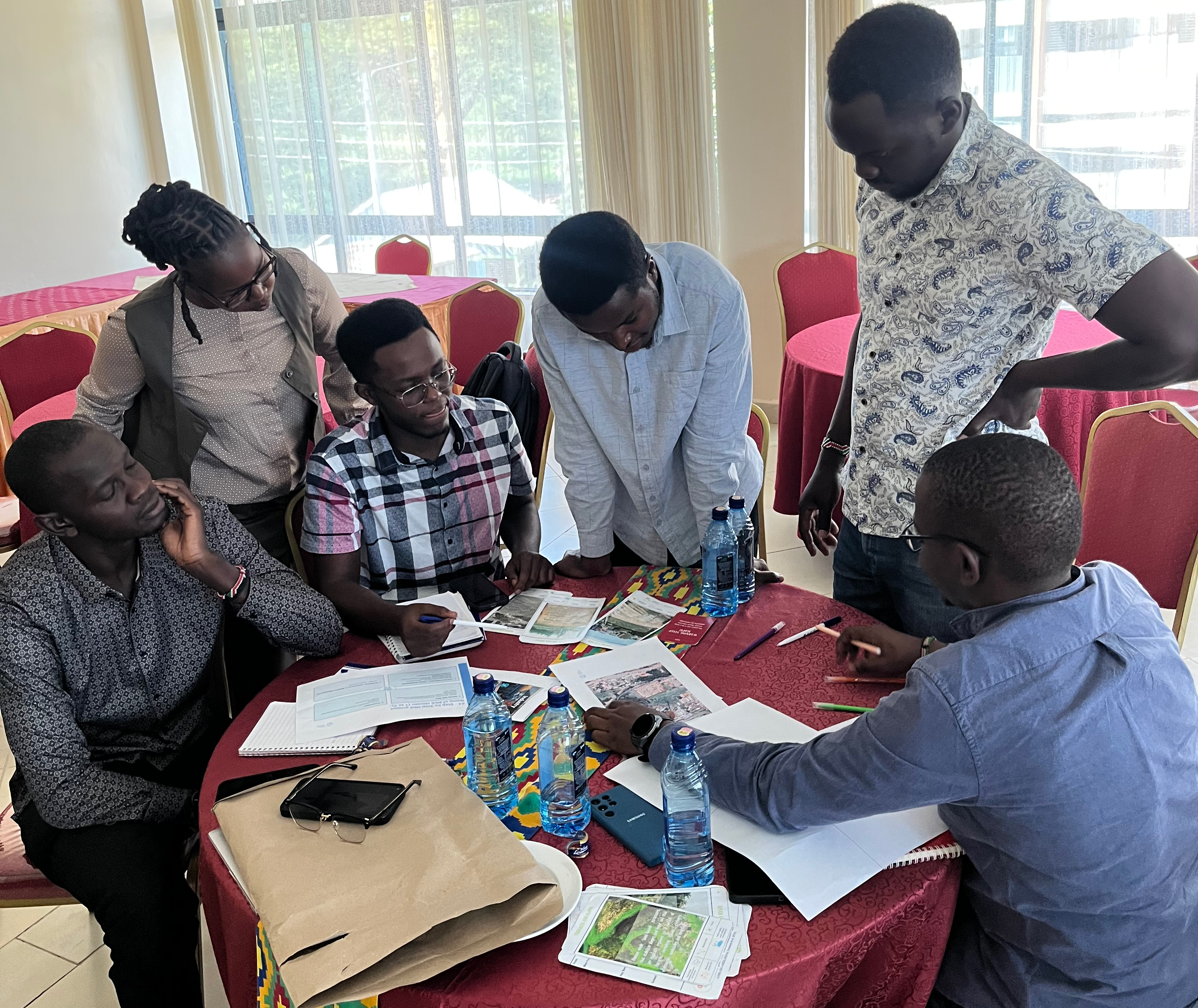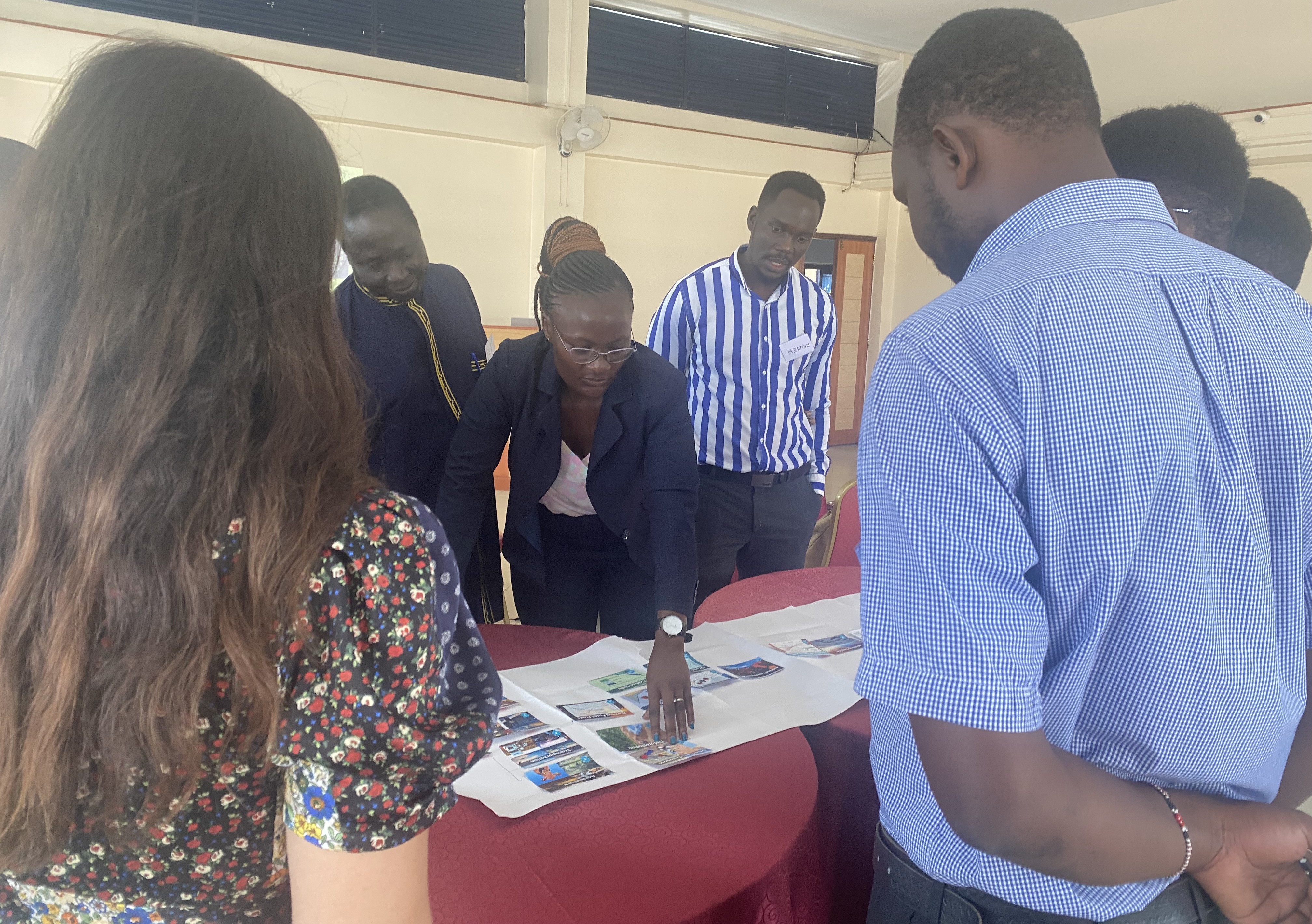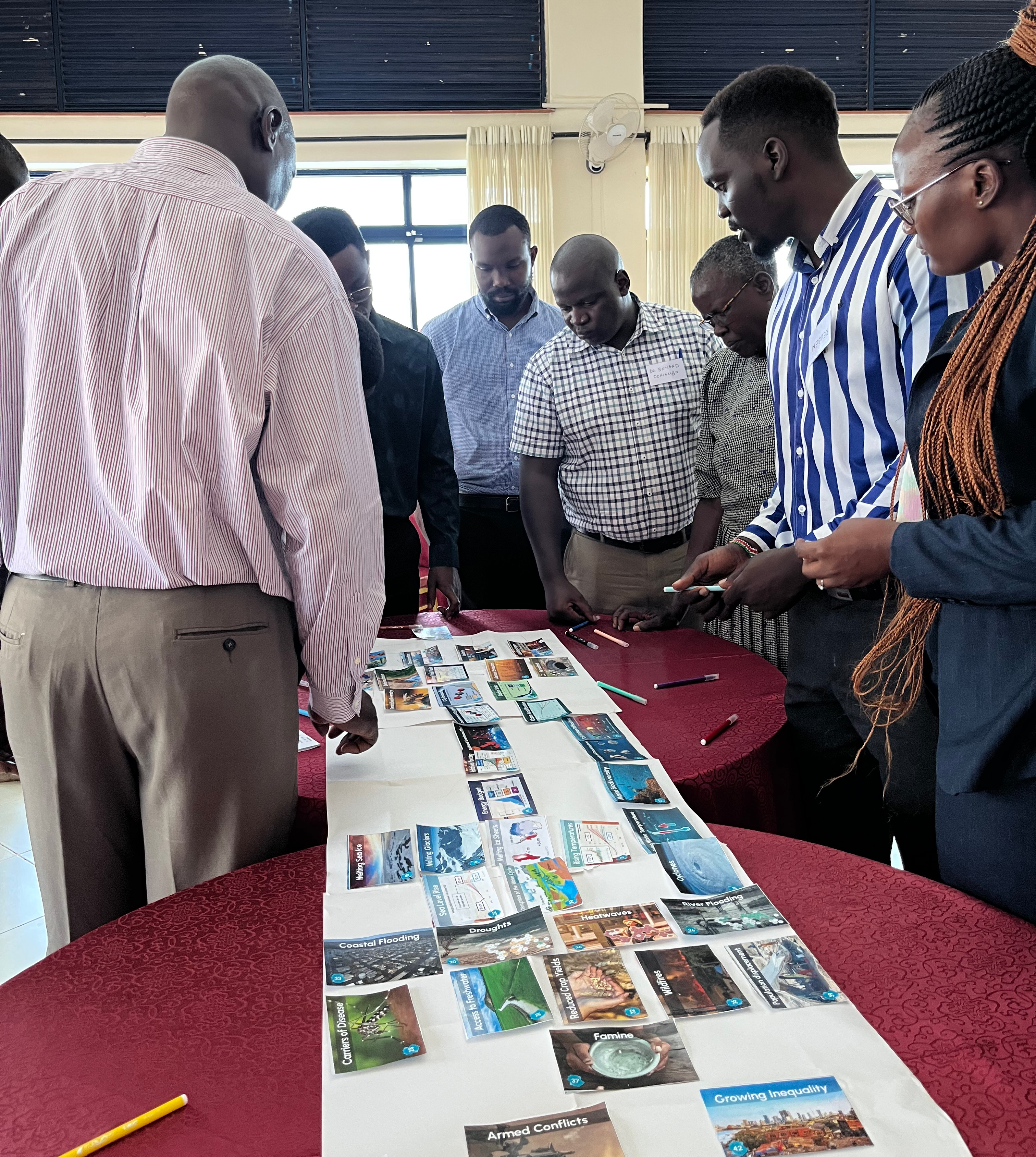
Homa Bay, Kenya, 24 July 2025 – Institutionalizing local capacity to conduct climate risk assessments has been central to the Global Center on Adaptation’s (GCA) support to Homa Bay County, while supporting the integration of adaptation into the Local Physical and Land Use Development Plan for Homa Bay Municipality. County officials and staff and students from Tom Mboya University actively participated in the climate risk assessment process for learning-by-doing. Their training culminated in a consolidation workshop held from 21–24 July 2025 in the County.
Approximately 18 county officials and representatives from Tom Mboya University gained hands-on experience with GCA partner SUEZ Consulting, when Rapid Climate Risk Assessments (RCRA) were conducted for three informal settlements in Homa Bay Municipality: Shauri Yako, Sofia, and Makongeni.
This experience was consolidated during the intensive four-day workshop in July, where experts from SUEZ trained 13 participants on understanding climate risk, applying assessment methodologies in data-scarce environments, integrating climate resilience into urban project cycles, and leveraging nature-based solutions to address local vulnerabilities. Participants engaged in hands-on exercises such as drafting a Terms of Reference for a climate risk assessment, and conducted a field visit to apply their new skills in situ.

The RCRA revealed cross-cutting risks across Homa Bay’s informal settlements:
High exposure to flooding, erosion, and shoreline hazards, with up to one-fifth of land in high-risk zones.
Widespread insecure housing, poor drainage, and low access to piped water and sanitation.
Livelihoods concentrated in informal, climate-sensitive sectors like fishing, vending, and small-scale farming, leaving households vulnerable to weather shocks.
Gender and youth-specific vulnerabilities, including low education levels, economic precarity, and minimal female homeownership.
Weak institutional coordination, limited enforcement of building codes, absence of early warning systems, and underfunded adaptation efforts.
In response, the RCRA identified five priority adaptation solutions for the three settlements:
Develop a checklist to improve the resilience of critical infrastructure and facilities, for integration into project identification and design.
Establish a community-based early warning and disaster management system for Homa Bay Municipality.
Implement drainage measures at identified locations.
Introduce flood protection using nature-based solutions (green corridors and bioretention areas).
Promote the use of resilient building materials.

A lecturer from Tom Mboya University noted during the workshop that integrating climate risk assessment tools into the curriculum will strengthen local expertise and better equip students to tackle future climate adaptation challenges. This commitment to capacity building ensures that the gains made through this project will continue to benefit Homa Bay’s resilience efforts long into the future.